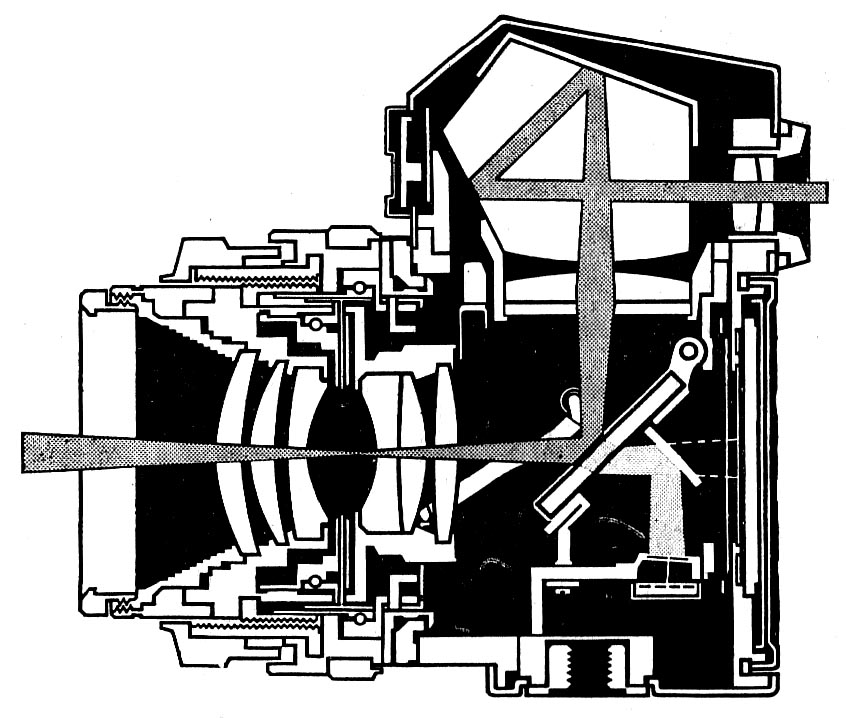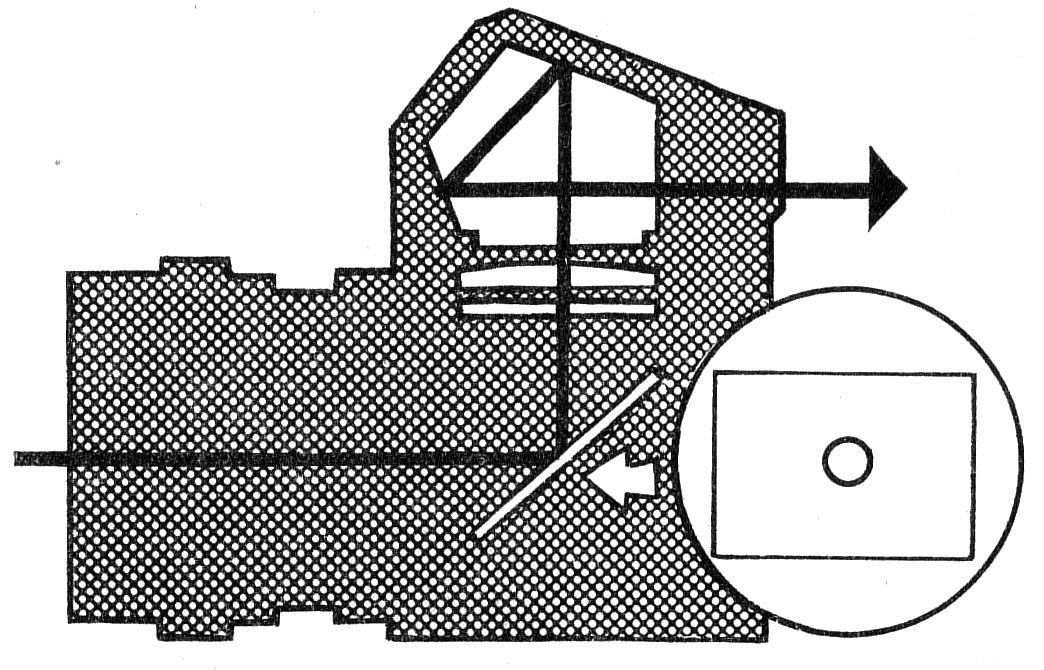LENS EXPOSURE MEASUREMENT.
The automation of the exposure time is closely related to the issue of measuring this time not in the special viewfinder of the light meter, but directly through the lens (drawing).

Drawing. Measurement of exposure through the lens.
If the camera has one, permanently built-in lens, the method of measurement does not matter much. The problem arises when interchangeable lenses are used.
We shoot with a wide-angle lens, np. 35 mm with an image angle of 63°, then at normal focal length 50 mm with an image angle of 45°, then telephoto 135 mm about the image angle 18 and it is not indifferent, what is the viewing angle of the built-in light meter, and it is known, that the angle of the image changes as the lens is changed.
Along with the change of the angle of view of the lens, the brightness of the relevant part of the photographed object sometimes changes radically; the difference between this, what includes a telephoto lens, and that, which includes a wide-angle lens can cause significant changes in brightness. The light meter will not show these differences, because its angle of view is always the same. On the other hand, there may be a lot of bright or dark parts of the image in the light meter's field of view, which will not be on the membrane, if the field of view of the lens (np. long focal length lens, telephoto) is much smaller. In addition, through-the-lens measurement also takes into account the filter, so there is no need to increase the exposure time read on the light meter separately by the exposure time extension factor, appropriate for the filter.
The principle of such measurement is simple, but its technical implementation is complicated. The light passing through the lens is directed, in whole or in part, to the photo element of the light meter, which regulates the exposure time. Depending on the focal length of the lens used, the amount of light in the light meter changes, because it defines him, ensuring full measurement accuracy.
Depending on the measuring principle, construction and arrangement of light meter photoelements inside the camera, there are different solutions. Namely, it can be a spot or integration measurement.
That's what spot metering is all about, the angle of view of the light meter is very small (drawing), is several degrees (ok. 5°—10°).

Drawing. Through-the-lens spot metering (measuring field in the form of a small disc in the middle of the image field).
It does not depend on the focal length of the lens, and the mere measurement of the brightness of the photographed object is limited to a small section, usually on the axis of the lens or at the bottom of the image. Spot metering has the advantage, that the brightness of the image is measured at a point, which photographer is most interested in (np. portrait on a black or white background), however, it does not take into account the environment, which can lead to good exposure of the part of the image covered by the measurement, with a faulty exposure of its rest. Therefore, if the photographer cares about the correct exposure of the entire object, showing large differences in brightness, you need to make 2-3 measurements at different points and average the average exposure time from them. Usually in every picture (beyond reproductions, science photos, technical etc.) there is a main element, so the spot metering method is more selective.